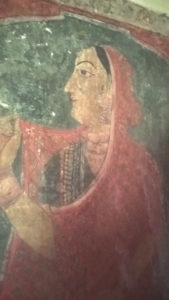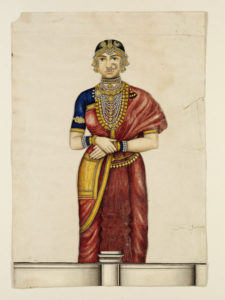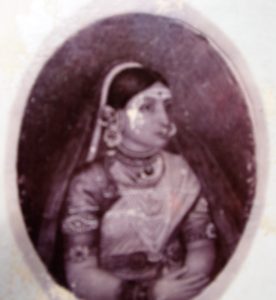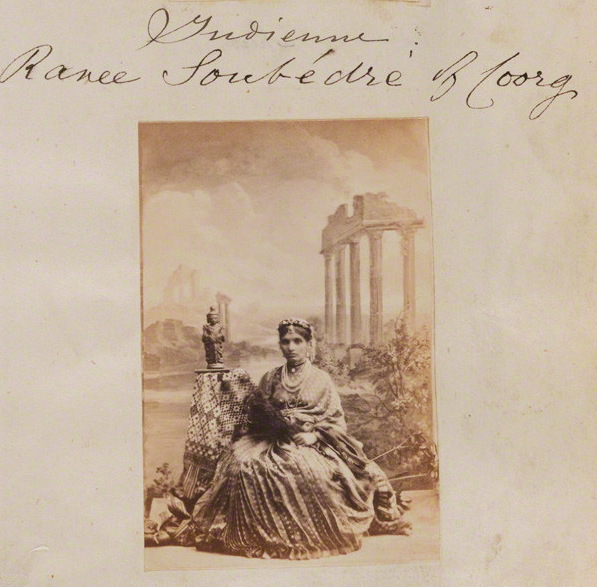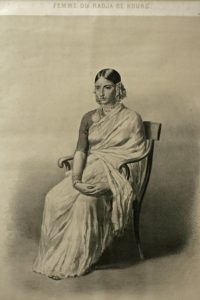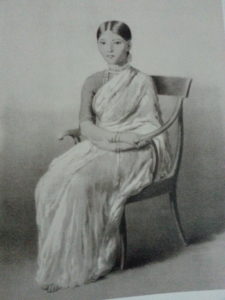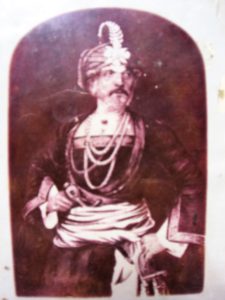
TALE OF LAST COORG RAJA: LUCKY IN LOVE (13 WIVES), BUT LOST KINGDOM
By C.P. Belliappa
On 24 April 1834, Chikka Veerarajendra (in picture), the last raja of Coorg, was ingloriously dethroned by the British and exiled, first to Vellore, and then to Benares, along with his thirteen wives.
In the afternoon of that fateful day, his entourage comprising of his wives (picture of some of the wives featured in the article), other women, cooks, Siddi bodyguards, and servants, left Madikeri Fort through the elephant-gate for the last time.
The raja rode out on his favourite elephant, and later switched over to a horse. The tearful women were carried in 70 palanquins followed by 50 bullock carts carrying their personal effects.
The Political Agent of the British, Col Fraser, sardonically ordered a 21-gun salute to the deposed raja as his subjects watched the spectacle with mixed emotions. The raja added to the tragicomedy by asking his palace band to play the happy tune ‘The British Grenadiers’ in a desperate bid to please his detractors.
Not all subjects were unhappy though. As the palanquin bearers struggled with their load, some snide remarks were heard. Captain Carpenter, who was appointed as the governor-general’s agent to keep an eye on the deposed ruler and his family, accompanied the entourage with his troops.
Of Chikka Veerarajendra’s thirteen wives, three were principal consorts or pattada ranis. They were – Gangammaji, Devammaji (Kunjeri Mukkatira), and Nanjammaji.
The other ten: Rajeevamma, Kalamma, Gowramma-I, Kongetira Kaveramma, Parvathiamma, Gowramma-II, Subbamma, Janakamma, Subhadramma and Mudduveeramma, were the minor wives. by Camille Silvy, albumen print, 24 September 1860
During their sojourn in Vellore, Nanjamma, one of his pattada ranis, died. At the time of leaving his kingdom, the raja had a six-year-old son named Chithrashekara born to Gowramma-II.
The British confiscated the raja’s wealth and permitted him to carry just Rs. 10,000 for his way expenses. The day before his banishment, Chikka Veerarajendra instructed his wives and other women to hide as much of their jewellery, gold, and other valuables in their clothing. This was the reason the palanquin bearers struggled with the load. At the first camp at Harangi, quite a number of the weary bearers abandoned the camp. In desperation, the raja and his wives buried some of the valuables in the privacy of their tents to lighten the burden, and hoped to return one day to recover the treasure.
They repeated this at various campsites on the way. Few of the raja’s supporters who were following him got wind of this. Days later, they returned to the sites and helped themselves to some of the treasure. Soon this news reached Col Fraser who threatened to take stern action against the fortune hunters. Most of them surrendered part of the valuables to the British for which they received Rs. 1000 as reward! In spite of this, the raja and his wives were able to smuggle out substantial portion of their treasure.
Chikka Veerarajendra and his remaining twelve wives reached Benares in early 1837. They were under virtual house arrest in a large haveli, which the British disdainfully named as ‘Coorg Nest’.
By 1852, the raja had four daughters and seven sons. His favourite pattada rani Devammaji sadly died soon after childbirth in 1841. Her daughter, named Gowramma, acquired world-wide fame as ‘Princess Victoria Gowramma of Coorg’, after Chikka Veerarajendra took her to London as an eleven-year-old in 1852.
On embracing Christianity, Gowramma got ‘Victoria’ prefixed to her name by Queen Victoria who took the Indian princess under her wings as her goddaughter; and that’s a long story…
Chikka Veerarajendra took his youngest wife Mudduveeramma and a concubine named Siddaveeramma with him to England in 1852. They spent 7 years with the raja in London. The duo returned to Benares after Chikka Veerarajendra’s demise in 1859.
On hearing the death of their husband, two of the raja’s wives in Benares committed ‘sati’ by consuming an overdose of opium. Two more tried to starve themselves to death, but were prevented by the British authorities.
Chikka Veerarajendra’s mortal remains was shipped to India in 1861. He was buried in the jungama in Benares in accordance with the Lingayat tradition.
Paintings of some of the ranis of Chikka Veerarajendra, reproduced here, were by court painters, Gangojirao and his son Pirojirao. Russian artist Alexey Soltykoff who visited India in 1841 and 1844 sketched Subhadramma, Gangamma and Mudduveeramma. At Nalaknad Palace in south Kodagu, one of the rooms has wall paintings of three of the raja’s wives.

